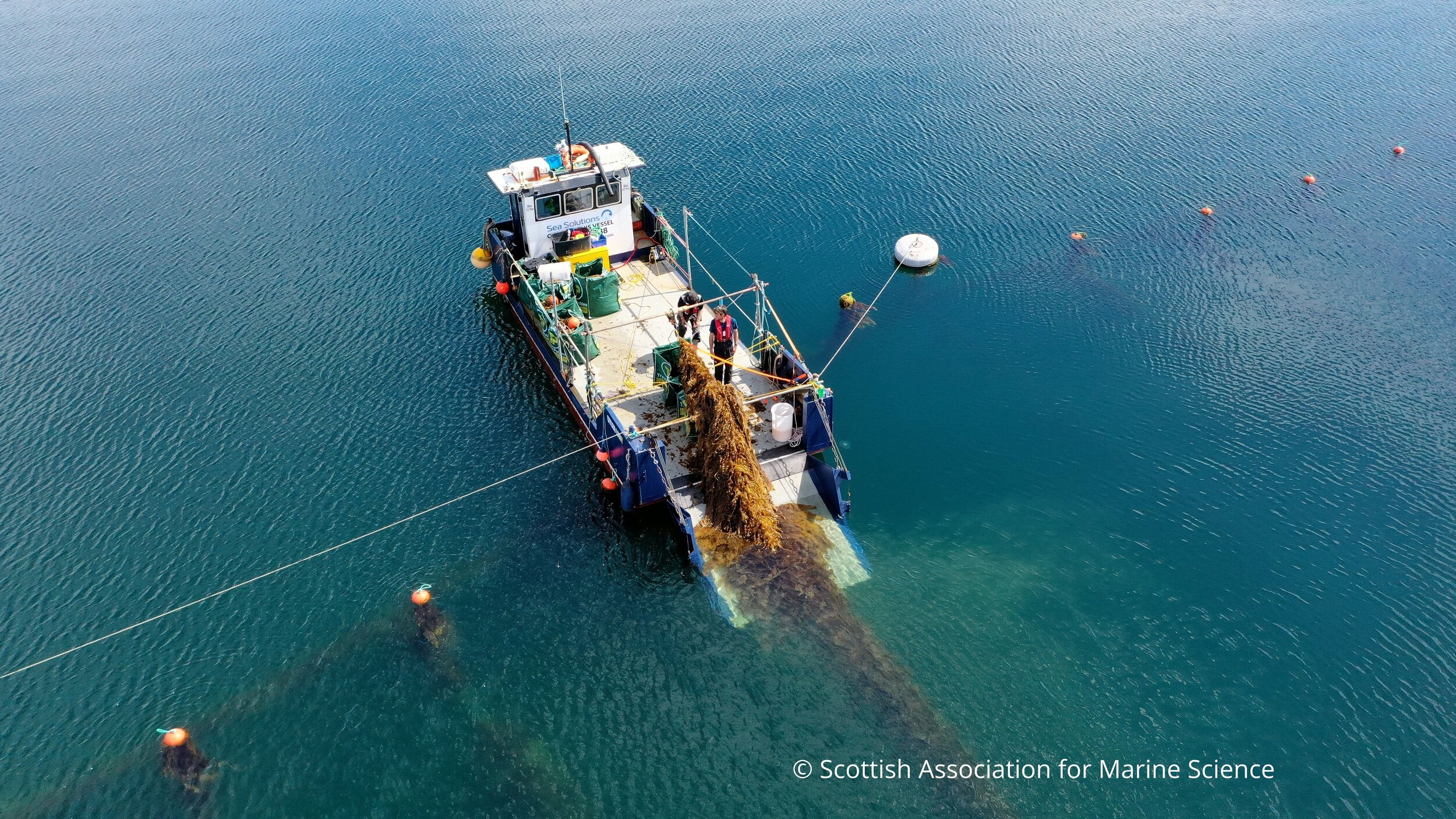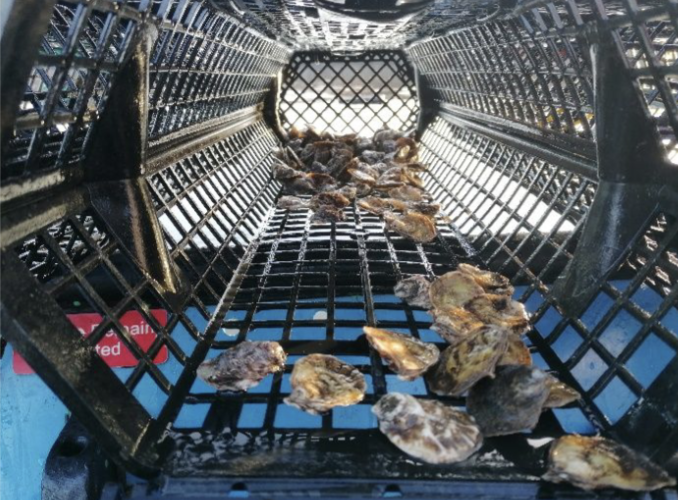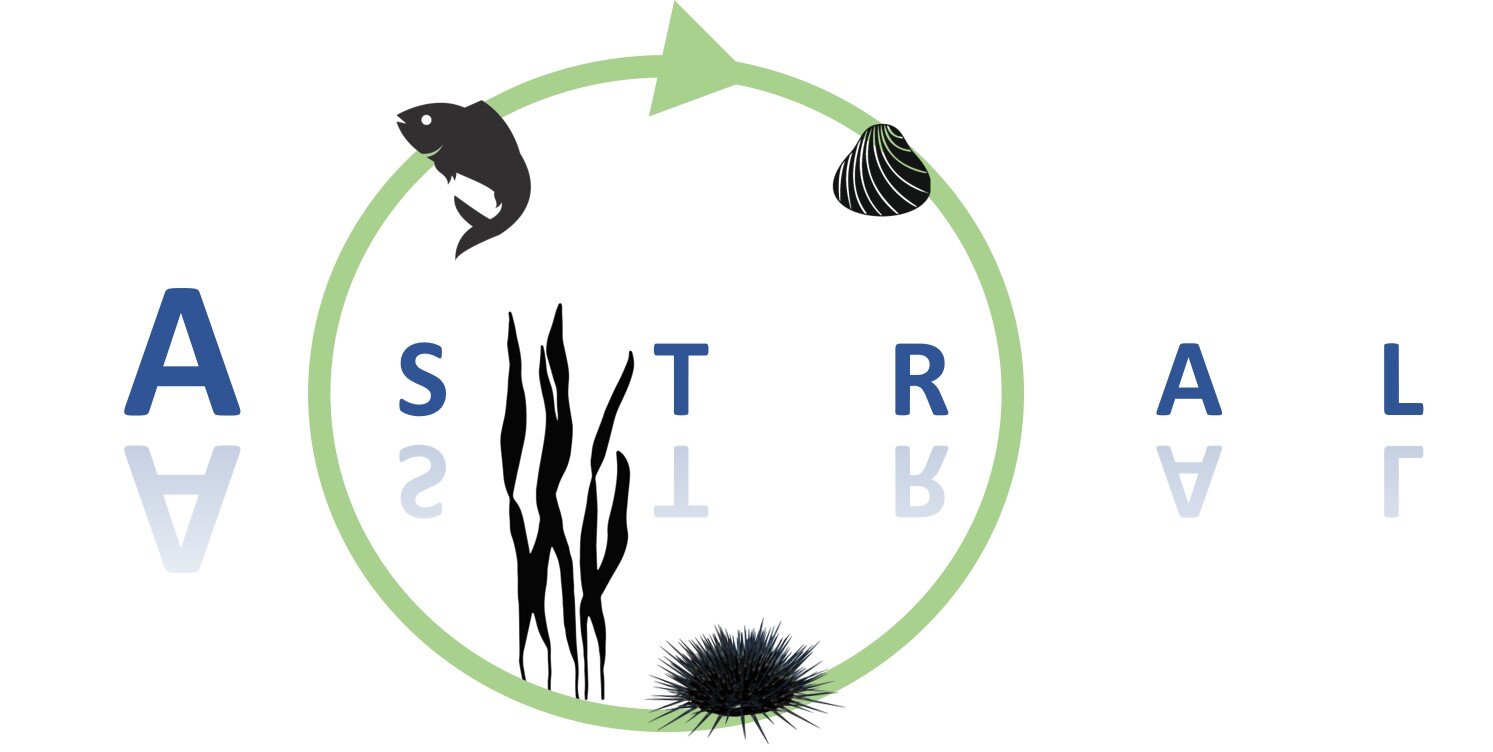IMTA LAB Scotland
Scottish Association for Marine Science (SAMS)
Location: Port-a-Bhuiltin
Lat/Long: 56° 29.176 N, 5° 28.315 W
The Scottish Association for Marine Science (SAMS) in Oban operates two experimental coastal farms on the Scottish west coast. Port-a-Bhuiltin is our main site with a lease area of 30 hectares. Here we operate a (100m x 100m) submerged tensioned grid system which provides the infrastructure to develop and test a wide range of cultivation approaches seeking to efficiently combine seaweed and shellfish cultivation.
Species:
sugar kelp (Saccharina latissima)
winged kelp (Alaria esculenta)
oarweed (Laminaria digitata)
native oysters (Ostrea edulis)
Dr Kati Michalek
kati.michalek@sams.ac.uk
IMTA Lab Scotland has defined the ASTRAL value chain for the open water system as follows:
[Inorganic] Extractive species
Kelp (Saccharina latissima)
Alaria esculenta
These are fast-growing and absorb dissolved inorganic nutrients, minerals and carbon - contributing to nutrient recycling and oxygenation of the cultivation environment.
[Organic] Extractive species
Native oysters (Ostrea edulis)
They are effective suspension feeders, filtering dissolved and particulate organic matter from the cultivation environment whilst providing additional nutrients for seaweeds
Novel species
[Organic] Extractive species
King scallops (Pecten maximus)
They are high-value species with similar ecological characteristics and synergies to Native oysters.



Description of IMTA processes and how species interact with each other:
The Scottish IMTA Lab is an open-water low-trophic aquaculture research site where different species of seaweed and shellfish are grown alongside each other, exploiting their synergistic interactions as found in the natural environment. Shellfish species filter particulate organic matter from the surrounding environment and release inorganic nutrients into the water column thus adding to the nutrient pool available for seaweeds to assimilate and grow. With the addition of organic extractive species to our existing seaweed cultivation site, we are exploiting the logistical and ecological synergies between seaweed and shellfish aquaculture to combine and optimise cultivation techniques and demonstrate an improved economic case for the co-cultivation of extractive species. Our research aims to facilitate the future expansion of similar IMTA models to achieve production scales necessary to produce widespread positive mitigation effects when sited with care.
Research Objectives:
Within ASTRAL, IMTA Lab Scotland will collaborate with producers, processors, and regulators to develop and validate IMTA systems with lower net cultivation costs to enable the development of novel applications. Year-round environmental and species monitoring will improve our scientific knowledge of the cultivation system performance and support the establishment of “best practice” protocols aimed at improving quality (e.g. optimal harvest to improve yield and composition) and efficiency (e.g. optimised stocking density) as well as mitigating environmental risks (e.g. biosecurity). The development of new cultivation systems will explore options to minimise cultivation waste through improved design and reducing, reusing, and recycling polymer-based cultivation materials.
Selected Research Questions:
1. What is the optimum water depth for kelp cultivation and does this vary across seasons?
2. What is the optimum stocking density to produce high-yielding biomass whilst being operationally manageable?
3. What criteria are required for the best IMTA species selection process? And as a result, which species are most suitable for our site?
4. What production methods provide optimal growth conditions for all species?
5. Is there a difference in species performance between mono- and co-cultivation of shellfish such as native oysters?
6. What is the reduce-reuse-recycle potential of individual infrastructure components and how can this be exploited further to improve circularity in aquaculture?







